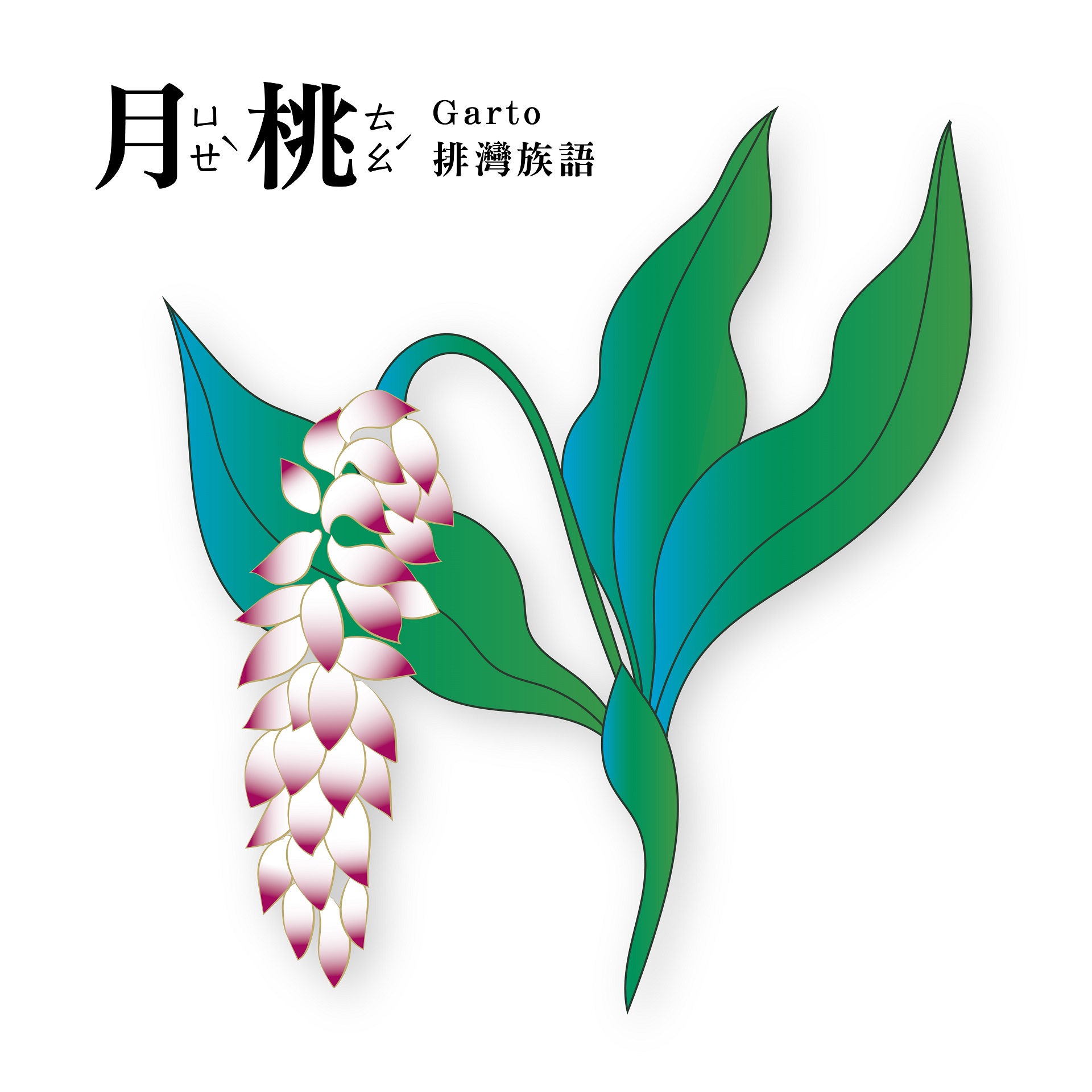date of issue:2021-06-16

月桃Garto(排灣族語)
「太麻里溪谷深處的地方,大武山懷抱的山谷,常披著彩虹的故鄉,滿山月桃花飛舞的蝴蝶」原住民音樂家胡德夫在歌曲《芬芳的山谷》一曲唱出了大武山的月桃芬芳
月桃為草本植物,花開時花辦末端呈現桃紅色,花苞成串優雅的垂懸掛著,成為果實時,初果為鮮綠色,成熟時為豔紅色,非常玲瓏可愛,開花季約在5~6月
在各族群都廣泛使用,如布農族、魯凱族、排灣族、阿美族、卑南族...等,它具有極高的藥用、食用、觀賞價值,月桃的果熟可做乾燥花材、家裡的飾品…等
月桃花的花苞可吸取解渴,莖幹果實可以煮月桃茶,月桃葉可用來包粽子,讓蒸熟的米飯帶著月桃的獨特香氣。而月桃地上的莖及葉鞘成為的編織的素材,月桃莖葉先於太陽下曝曬後再將莖撥開,平整捲成圓圈狀繼續曝曬,待完全乾燥後即可用於編織,可製作成草蓆、籃子等生活器具
Garto (the Paiwan word for Alpinia formosana)
“Along the Taimali Creek, in the valley deep in the embrace of Dawu Mountain, lies a homeland often draped in rainbow, covered by garto flowers and butterflies…” -from the song Sweet Home Ka-Aluwan, by aboriginal artist Ara Kimbo
Classified as an herb, garto (Alpinia formosana) plants grow flowers with pink-tipped petals. The buds hang elegantly in bunches, turning green when they become fruit, and eventually crimson red when ripe. These exquisite plants typically bloom in May and June.
The plant is widely used in Bunun, Rukai, Paiwan, Amis, Puyuma, and practically all other aboriginal cultures in Taiwan. Uses include: medicine, food, scenic beauty, household decorations, and dried-flower bouquets.
Garto is used in food and drink: from garto buds, juice can be extracted for drinking; stems and fruits can be used to make tea; leaves can be used to wrap zongzi (a traditional treat made from sticky rice), adding a distinct herbal flavor. For weaving material, leaf sheath fibers can be processed: first dry the branches with attached leaves; then remove the leaves; peel off the fibers from the straight branch, and wrap them in circular bundles to continue drying; finally, the dried strands can be used to weave mats, baskets, and other useful household items.
